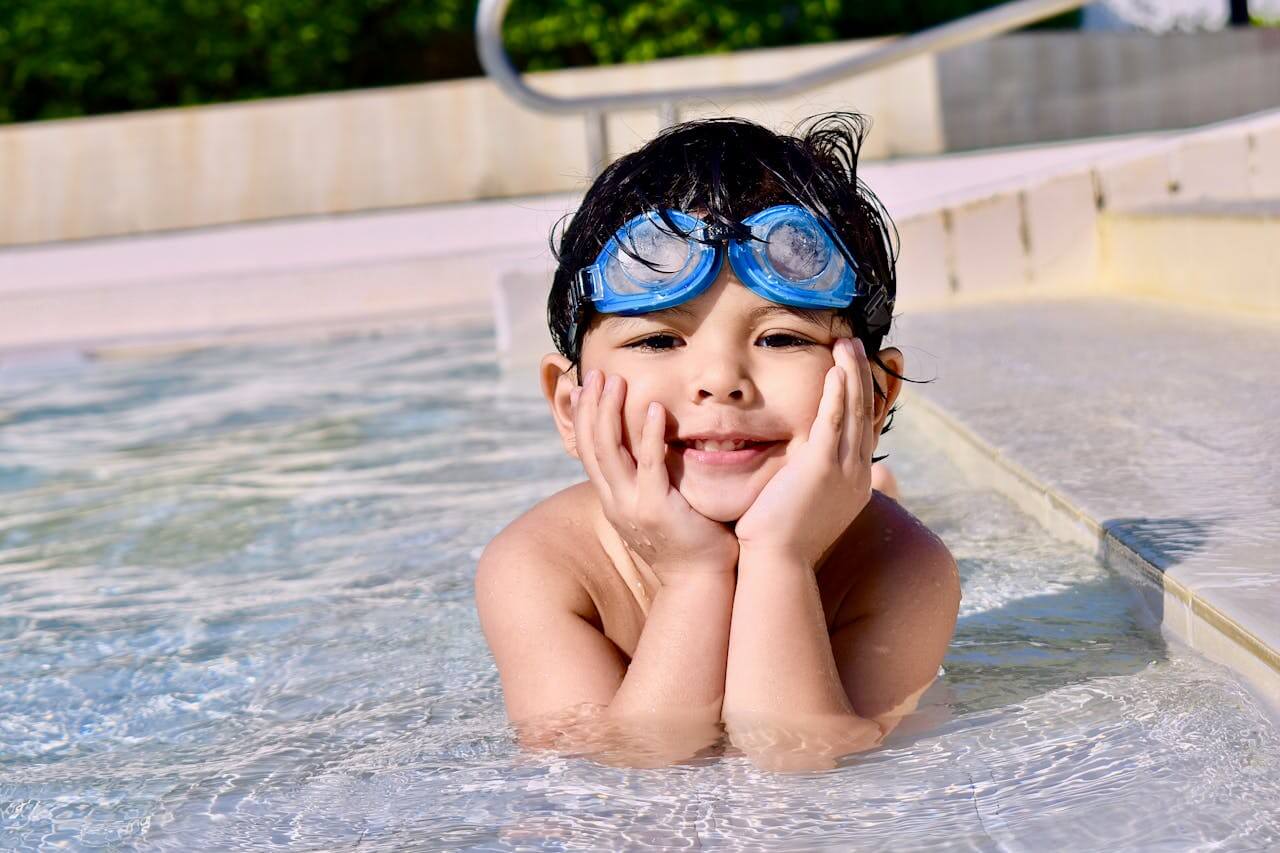Preventing Tragedies Before They Happen
Toddler Water Safety

Toddlers are naturally curious, eager to explore, and often drawn to water. Whether it’s the sparkle of a backyard pool, the splash of a bathtub, or even a bucket left out in the yard, water can be a dangerous hazard. Drowning remains one of the leading causes of injury-related death in children ages 1-4, making it crucial for parents and caregivers to take proactive steps to keep little ones safe.
Understanding the Risks
Drowning can happen in just seconds and in as little as an inch of water. Unlike what is commonly depicted in movies, drowning is often silent, occurring without splashing or calls for help. The greatest risk for toddlers comes from unsupervised, unexpected access to water. According to statistics, 69% of drownings involving children under four happen during non-swim times when caregivers do not anticipate water exposure.
Layers of Protection: Reducing Drowning Risks
The American Academy of Pediatrics (AAP) recommends using multiple “layers of protection” to minimize the risk of drowning. These strategies help prevent water-related accidents, even during moments of brief parental distraction.
1. Secure Swimming Pools and Hot Tubs
Install a four-sided fence at least four feet high around all pools, with a self-closing and self-latching gate that opens outward.
Ensure the latch is at least 54 inches from the ground to prevent toddlers from reaching it.
Keep pools and hot tubs covered and locked when not in use.
Remove pool toys when swimming is over to prevent toddlers from attempting to retrieve them.
2. Eliminate Other Backyard Water Hazards
Drain and store away inflatable pools and buckets after each use.
Consider delaying the installation of birdbaths, ponds, or decorative fountains until children are older.
Cover and secure wells, irrigation ditches, and other open water sources in your yard.
3. Prevent Unsupervised Access to Water
Use childproof locks on exterior doors to prevent toddlers from wandering outside unnoticed.
Install safety gates, doorknob covers, or alarms on doors leading to areas with water hazards.
Teach siblings and other family members to close doors behind them and keep barriers in place.
4. Water Safety Inside the Home
Never leave a young child alone in a bathtub, even for a moment.
Empty bathtubs immediately after use and remove the drain plug.
Keep bathroom doors closed when not in use and install toilet seat locks.
Never leave open containers of water, such as buckets, coolers, or pet water bowls, unattended.
Active Supervision: The Key to Prevention
Supervision is the most crucial element of water safety. Caregivers should remain within arm’s length of toddlers when they are near water and avoid distractions like phone use, household chores, or socializing.
Assign a “Water Watcher”
During gatherings where children are swimming, designate a responsible adult as a “Water Watcher.” This person should give their full attention to supervising swimmers and switch with another adult every 15 minutes to stay alert.
Use Touch Supervision
The AAP recommends “touch supervision” for toddlers, meaning a caregiver should always be close enough to reach and grab the child instantly in case of an emergency.
Life Jackets Save Lives
When near natural bodies of water such as lakes or rivers, children should always wear a properly fitted, U.S. Coast Guard-approved life jacket.
Children and weak swimmers should also wear life jackets at pools and water parks.
Swim Lessons: When to Start
Introducing children to swim lessons at an early age can help reduce the risk of drowning. The AAP supports swim lessons for children as young as one year old, depending on their readiness. Factors to consider include:
Comfort level in water
Physical and developmental abilities
Frequency of exposure to water
Emotional readiness
Parent-child swim lessons are an excellent way to build water confidence while reinforcing safety measures. However, swim lessons should always be seen as a supplement to, not a replacement for, direct supervision and physical barriers.
Be Prepared: Know How to Respond
Even with the best precautions, accidents can happen. Being prepared to respond quickly can make the difference between life and death.
Learn CPR and rescue techniques. All parents, caregivers, and older siblings should know how to perform CPR.
Keep emergency numbers posted near pools and on mobile phones.
Have rescue equipment, such as a shepherd’s hook or life ring, easily accessible near pools.
Final Thoughts
Water safety requires constant vigilance and multiple protective measures. By securing potential hazards, providing close supervision, teaching swimming skills, and knowing emergency response techniques, parents can significantly reduce the risk of drowning. Whether at home, at a friend’s house, or on vacation, keeping water safety top of mind will help protect toddlers from preventable tragedies.

vHv ZQWeqa JFQIWc